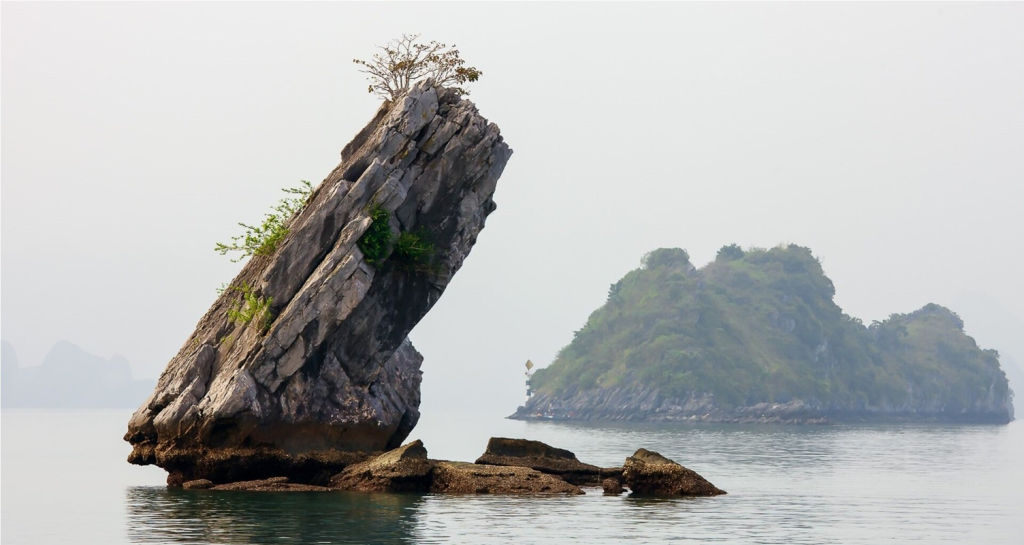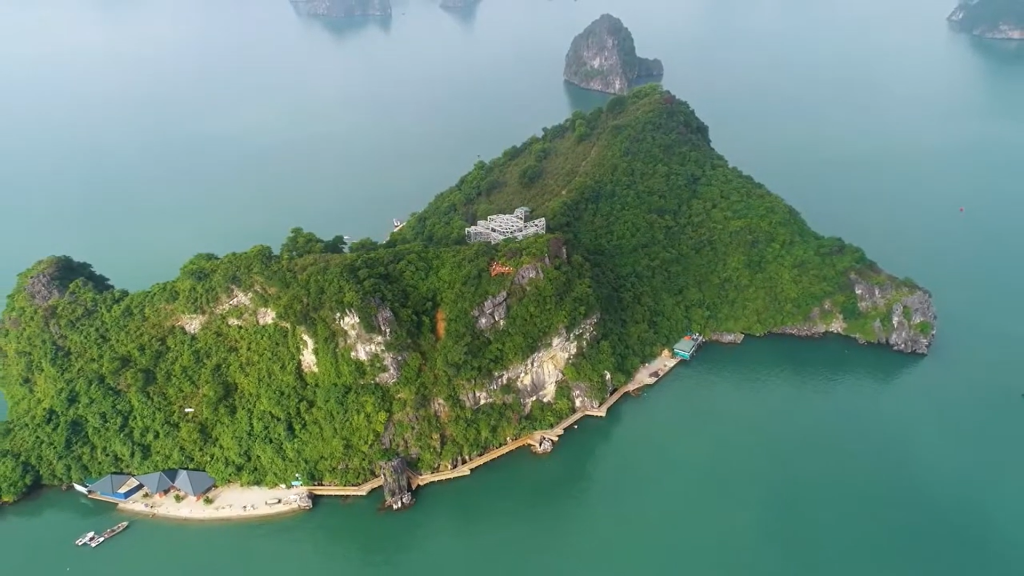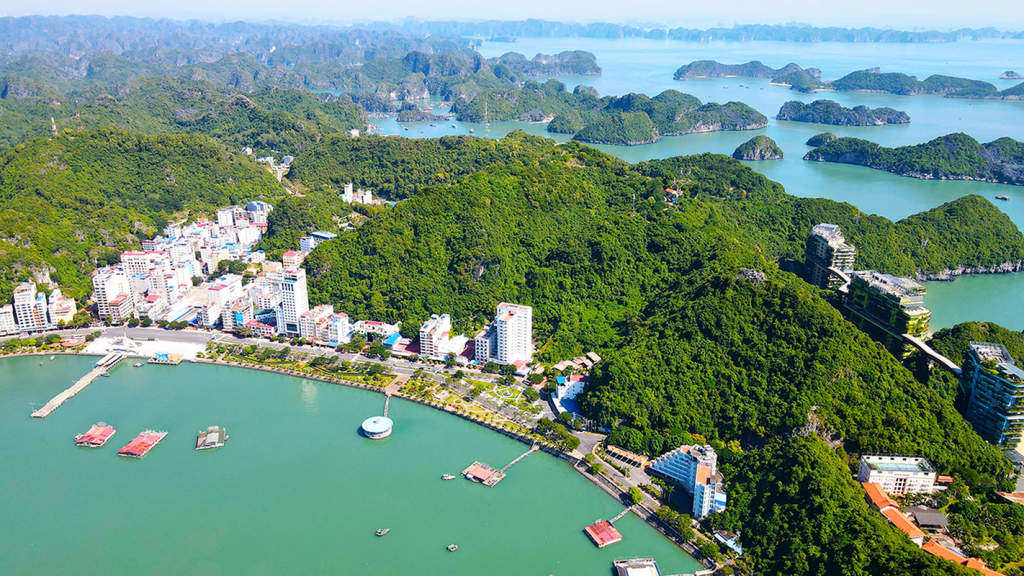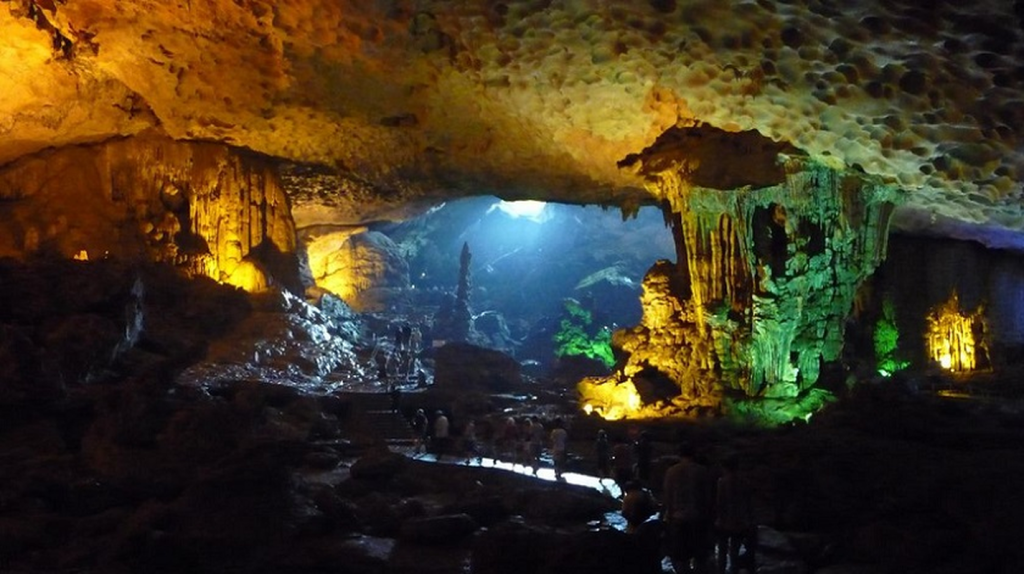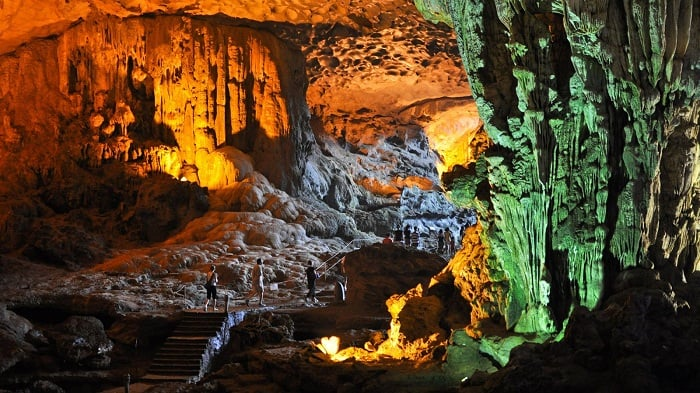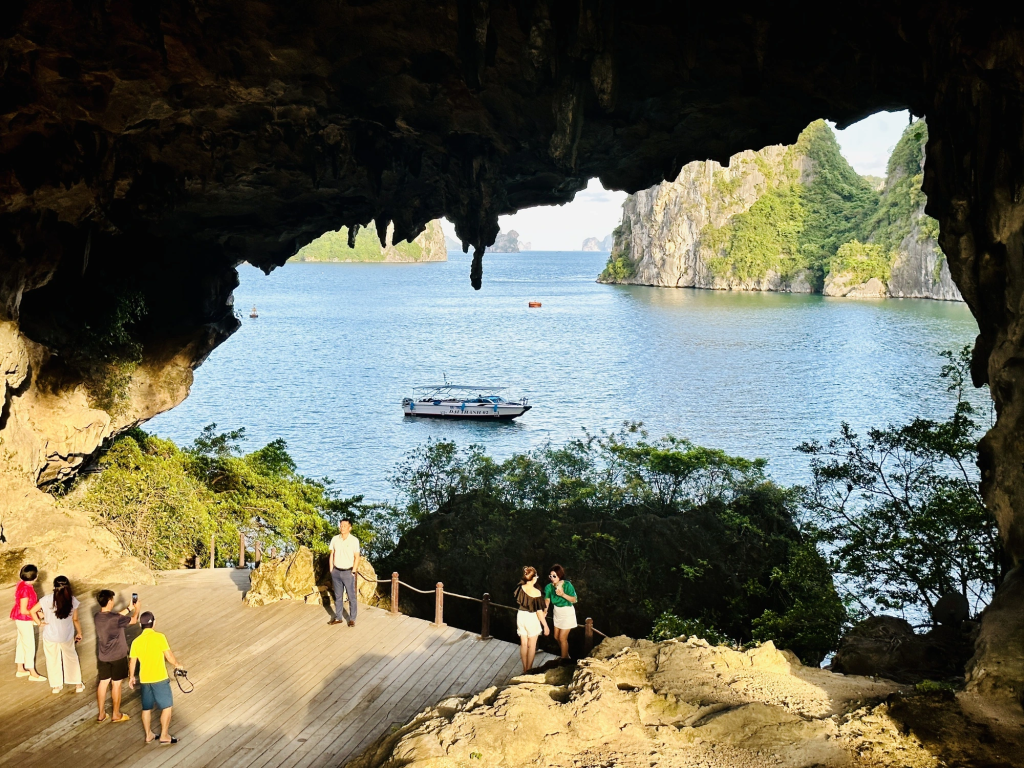Over millions of years, the geological processes that shaped Ha Long Bay have given rise to thousands of islands, both large and small, emerging from the sea to form a world-renowned natural wonder. Alongside its majestic mountains, serene beaches, and mysterious caves, the bay is dotted with uniquely shaped islets that add to its breathtaking beauty. Previously, we introduced some of the most iconic rock formations in Ha Long Bay, such as Hon Trong Mai and Hon Dinh Huong. In this article, we will continue our journey, discovering even more fascinating natural formations sculpted by time and nature.
Xep Islet – Hòn Xếp
Located on Route 4 in the heart of Xep Islet Park, Xep Islet is a striking formation approximately 30 km southeast of Tuan Chau International Marina and 25 km from Ha Long International Passenger Port. This geological marvel is composed of large, square stone blocks stacked in distinct layers, resembling an ancient architectural masterpiece. Standing 21 meters tall, Xep Islet bears a resemblance to an Egyptian pyramid, rising majestically in the serene waters of Ha Long Bay.
The islet’s unique tower-like structure is a highlight for those taking the scenic Route 4 tour, offering a glimpse into the natural wonders of Ha Long Bay. The islet, with its towering formation, evokes the grandeur of the pyramids but with a softer charm, as clusters of orchids grow in the cracks between the rocks, adding to its beauty.
Visitors can reach Xep Islet after a boat ride of approximately 3 hours and 20 minutes from Tuan Chau Port. As part of Route 4, the journey also includes stops at other fascinating sites, such as Vung Vieng Fishing Village, Thien Canh Son Cave (Hang Co), and Red Sewer Island. A ticket for Route 4 in Ha Long Bay, along with a rented boat, allows travelers to fully explore these scenic destinations, making Xep Islet an unforgettable stop along the way.
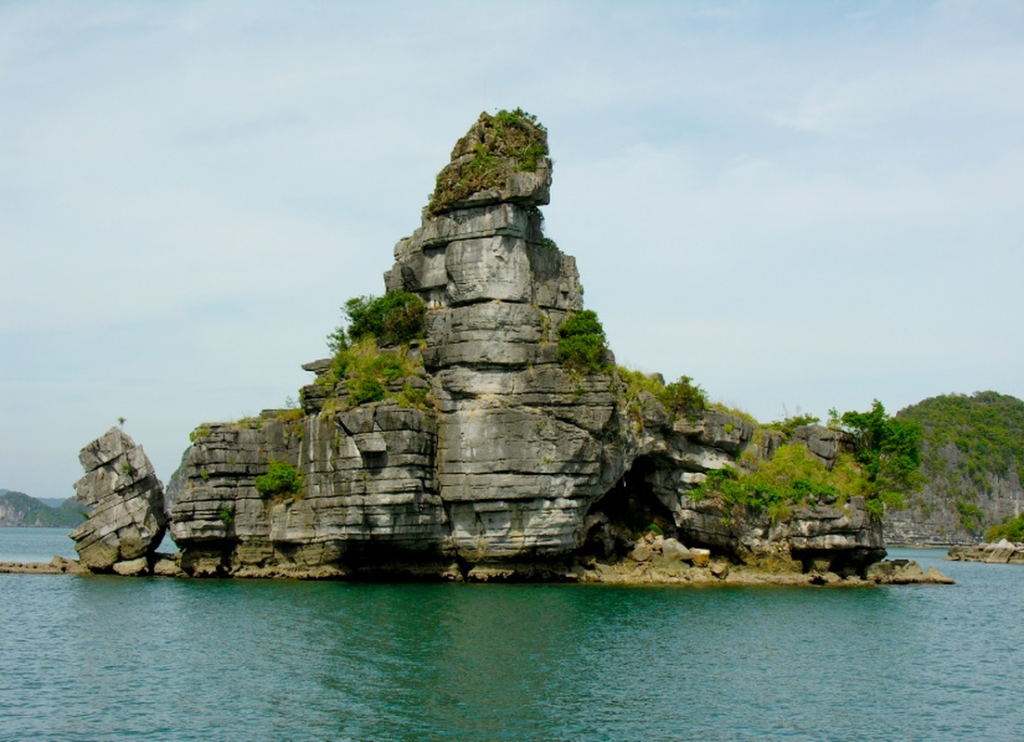
Other Islets In Ha Long Bay – Hon Xep Islet
Ngon Tay Islet – Finger Islet (Hòn Muối Nam)
Ngon Tay Islet, also known as Muoi Nam Islet, is located along Routes 1 and 5 in Ha Long Bay, about 8 km from Tuan Chau International Marina and 9.2 km from Ha Long International Passenger Port. The islet’s name, which means “Finger” in English, comes from its distinctive shape, resembling a thumb pointing upward toward the sky.
Situated on the way to Ti Top Island, Ngon Tay Islet is one of the many limestone formations in Ha Long Bay that sparks the imagination of visitors. Each islet, whether large or small, offers a unique and captivating sight. While boats don’t stop directly at the islet, it’s a great spot for taking stunning photos as you pass by. Be sure to have your camera ready to capture this fascinating natural feature.
For travelers visiting in the summer, it’s recommended to bring sunscreen, sunglasses, or a hat to protect yourself from the sun while enjoying your tour. Make sure your camera is fully charged to ensure you don’t miss any memorable shots.

Other Islets In Ha Long Bay – Ngon Tay Islet
Cho Da Islet (Hòn Chó Đá)
Cho Da Islet, also known as Stone Dog Islet, is a small, 8-meter-high rock formation located in the area that includes popular stops in Ha Long Bay, such as Thien Cung Cave, Dau Go Cave, and Ti Top Island. Its name derives from its unique shape, which resembles a dog sitting with its back to the sea, symbolizing a guardian watching over travelers as they explore the bay.
After visiting Thien Cung Cave, it takes about 10 minutes by boat to reach Cho Da Islet. Positioned as a sentinel in the middle of the bay, this natural formation has been standing for millions of years, guarding the safety of visitors. The islet’s distinct shape adds to the allure of Ha Long Bay, which is home to 1,969 islands, each with its own story and charm.
As part of the UNESCO-recognized natural heritage site, Cho Da Islet is one of many fascinating landmarks in Ha Long Bay. Its iconic appearance makes it a memorable sight for tourists, providing a sense of security as they journey through the stunning waters.
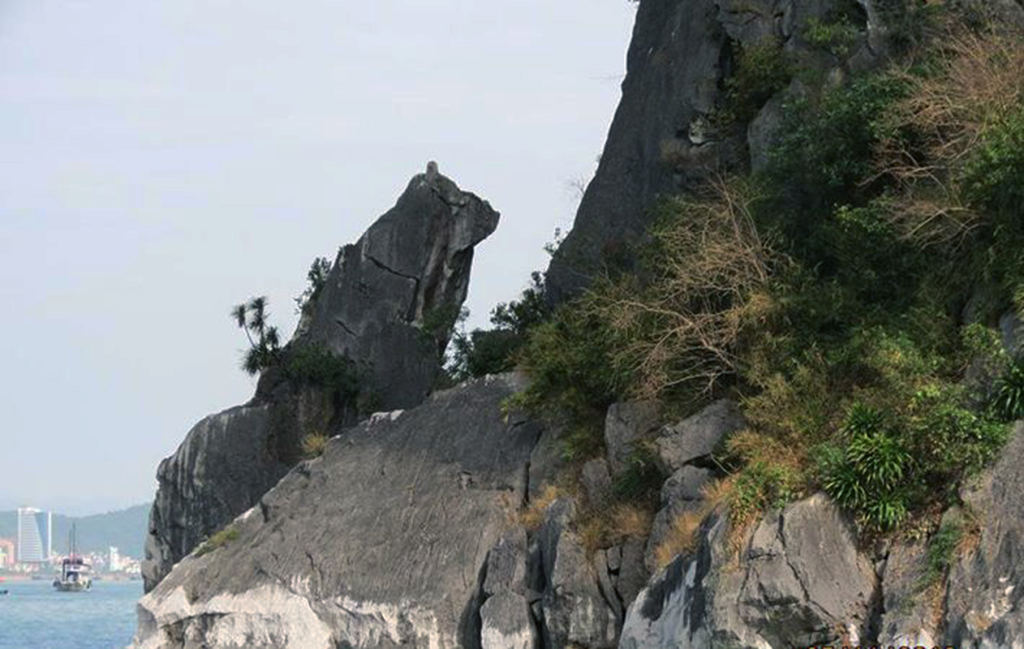
Other Islets In Ha Long Bay – Hon Cho Da Islet
Toad Islet – Hòn Con Cóc
The Saddle Islet – Hòn Yên Ngựa
Located in the heart of Ha Long Bay, Saddle Islet (Hòn Yên Ngựa) is a unique rock formation shaped by nature’s artistry. It consists of two stone mounds, one larger and one smaller, skillfully connected to form the shape of a saddle.
What makes Saddle Islet even more remarkable is the hollow space in the middle, creating a natural passage just wide enough for a medium-sized cruise ship to pass through. This distinct feature adds to the charm and allure of Ha Long Bay, offering visitors a striking example of the bay’s geological wonders.
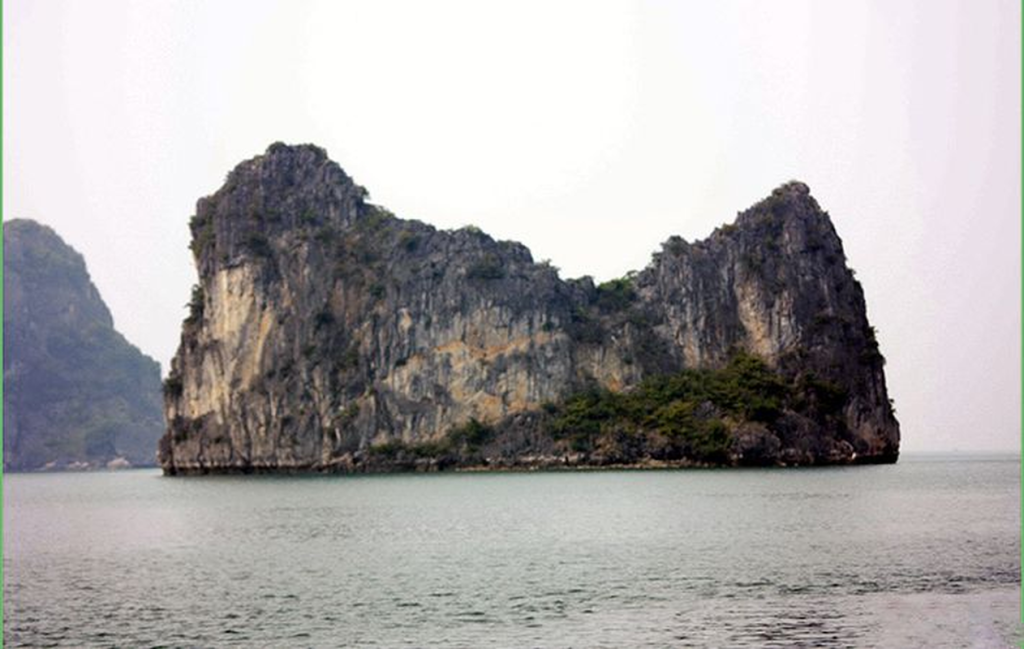
Other Islets In Ha Long Bay – Hon Yen Ngua
Oan Islet – Hòn Oản
Oan Islet (Hòn Oản) is located very close to the shore, easily visible to the naked eye on clear weather days. Standing 22 meters tall, its balanced and rounded shape resembles a traditional Vietnamese offering cake, which is why locals call it Oan Islet.
This islet gained special attention from French visitors as it appeared in the film L’Indochine, produced by Paris Film. Some of the film’s set backdrops, built on the islet, have been preserved to this day, adding an intriguing historical element to its natural beauty and making it a memorable sight for tourists.
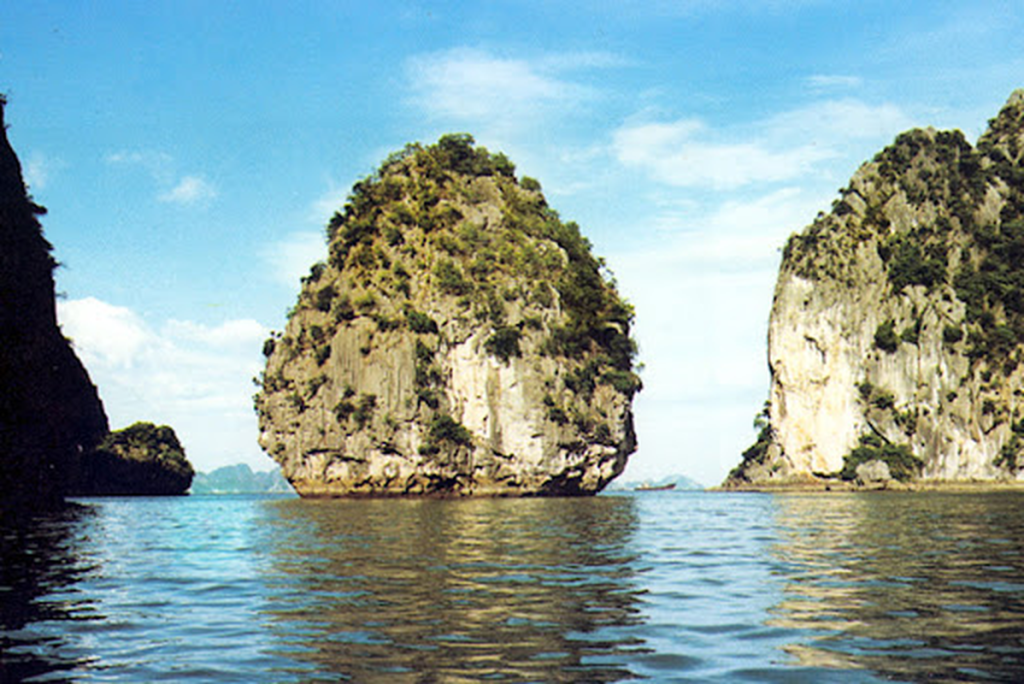
Other Islets In Ha Long Bay – Hon Oan


